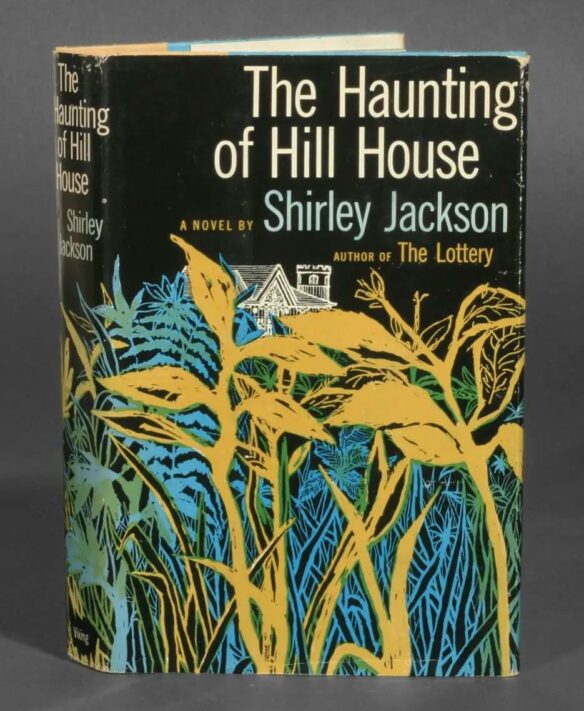
- The Haunting of Hill House by Shirley Jackson (Viking, 1959)
By Warner Holme: Shirley Jackson’s The Haunting of Hill House has long been a major work in horror. It is often described as the most important Haunted House novel. That ignores the bulk of material from before unfairly, but does help to illustrate how revered the volume is.
Dr. John Montegue wants to prove supernatural happenings occur at Hill House. As a result, he contacts a variety of people who have experienced supernatural happenings, those associated with the house, and more in an effort to prove his point. Naturally, only a smattering of these come. While others join them, the secrets that these individuals and the latecomers hold play as much a role in the following pages as anything explicitly supernatural.
The question of what exactly is going on in the house can only be seen as a clever one. Believers in the supernatural and a stronger sense are typically depicted as dismissive and self righteous, and yet skeptics are those attempting to dismiss.
The wordings are even stranger, with a dread at “not my mother knocking on the wall” being expressed clearly at one point in an impressive use of multifunction dialog. In addition to leaving the entity unknown, it creates a clear association of Eleanor with her mother and fear. Given that Eleanor is one of the possible sources for supernatural happenings in the story, this opens up a great deal, further questions and delightfully disturbing possibilities than might have been present otherwise. These little implications, whether expanded upon or not, provide a delightful nuance to the type of horror that is achieved.
One explicit detail of this book is the often put forth idea that a ghost cannot directly harm a living person. This is brought up repeatedly in somewhat different forms command unfortunately, given that the proof of the supernatural is not treated as definite through much of the text, it rather raises the question of if the reader is supposed to see it as a rule of the setting or an assumption of the investigators or something else.
At one point, Stephen King put this among the best horror novels of the late Twentieth Century. The book was released in 1959, marking it as decidedly an example of mid-Twentieth Century material. The particularly mid=century ideas, down to a relatively slow communication even compared to the Sixties, are a strong undercurrent in this book. Concerns and gender issues are stated and relevant, but very much more in a focus that predates a Sixties assumption of a certain level of liberation.
Overall, this is a classic, and with good reason. It’s probably the most well-remembered novel by Shirley Jackson, and The Lottery is the main impediment to saying it’s the most well-remembered piece of her writing. Reading through it, even at this late date, does show the reason why. Much like many later and earlier horror novels, this volume focuses on people with their own issues who come by their flaws and secrets, and how those interact with one another and of the world to create a set of orders separate from anything supernatural.
Discover more from File 770
Subscribe to get the latest posts sent to your email.

Pingback: AMAZING NEWS FROM FANDOM: February 9, 2025 - Amazing Stories